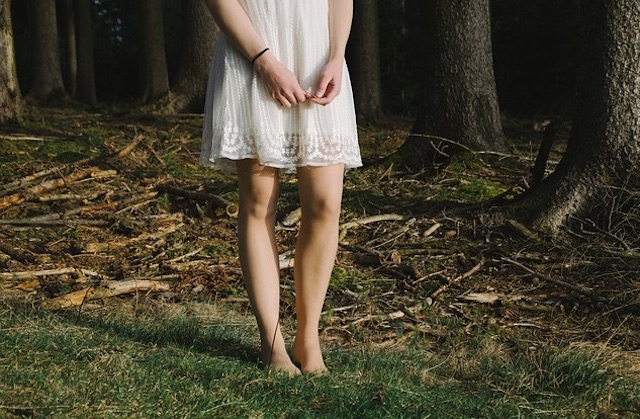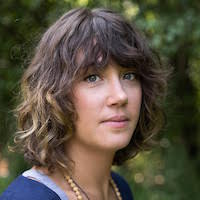I was a new mom when I started doing yoga.
Single. Sleep deprived. Raw and vulnerable.
I walked past a sign in the window of a studio one day that said “Breathe.”
I need to do some of that, I thought to myself.
So, I went to a beginner’s yoga class. At one point during the class, sprangled out in a deep I.T. band stretch, the teacher walked over to me and in a whisper asked me why I was there. It took me a moment to realize she meant why was I in a beginner’s class.
“I’m a beginner,” I told her earnestly. She chuckled and walked away.
I’d been doing Pilates since I was in high school, and by that point was a teacher. Yoga had never really appealed to me—I never wanted to be quiet with my thoughts.
But now all I wanted was quiet. And lucky me, it appeared I was a natural yogi.
And thus my love affair with yoga began.
I was obsessed. My weekly schedule revolved around the classes I wanted to take. Books on asana and yogic philosophy started piling up at the bedside. Favorite mantras downloaded onto my iPod.
As someone who had always sort of eschewed communities and clubs, I found myself uncharacteristically excited to be a regular somewhere, suddenly psyched at the opportunity to make small talk with people when we’d randomly end up in the same class at a different studio or run into each other in the grocery store.
I belonged somewhere. It felt good.
I had a beautiful practice—on my mat I was graceful and strong—two things I didn’t feel I really ever embodied in my day-to-day life. I could execute arm balances and bend myself in all sorts of impressive ways.
But it was noisy.
The obsessive need to practice was way more about credibility and my body image than it was about deepening mindfulness and spirituality. At the time I didn’t see it that way. I thought the fact that I was a wholehearted vegan, that I didn’t wear fancy yoga clothes and was quite legitimately invested in being a better person, meant that I wasn’t a poser.
When I had to dial back because of an injured wrist and shoulder, practicing became less appealing. I didn’t want to skip the advanced variations of poses in class.
Five years into my practice and I still didn’t want to be quiet with my thought—I wanted to look like a good yogi, because looking like a good yogi made me feel like a good yogi.
So, I started practicing Kundalini yoga, throwing myself as fervently into that practice as I had Hatha yoga. I did a training and 40 day sadhanas, had a spiritual name and filled in to teach a few classes here and there. I started to change. Rapidly. The way I processed feelings and emotions shifted. I started to put things down.
“I will never not do this,” I’d think to myself after a powerful meditation.
As my inner landscape underwent massive renovations, my life started to change in significant ways too, my new self, not able to live with the relationships and choices made in my less-evolved state.
I called off my wedding, ending the on-off relationship that I’d danced with for almost a decade. I established some healthy boundaries with an alcoholic parent, ones that ultimately led to a complete estrangement. Some friendships deepened, others disappeared. I started to wake up to what I didn’t want, what didn’t work for me, what didn’t feel good.
But I didn’t know who I was or what I did want.xxx
I ached to connect with myself. To find that love for myself that teachers always talked about.
Sometime during this period I read Stephen Cope’s book Yoga and the Quest for the True Self. When I got to the part about the identity project—the persona we create and attach to as a way of affirming our existence—I lost my mind.
Cope writes: “We are impelled to search for a sense of being from without, seeing ourselves mirrored back in the reflection of our ‘doing’ in the world.” He goes on to explain that in the yogic view, the identity project keeps us “bound to an image of who we’re not, rather than offering us an experience of who we are.” And that in our culture, we’ve mistaken the identity project for self-actualization, when in fact it’s only the point at which you’re willing to leave all the identifying behind that you can really begin to understand who you are, your essence.
It was like a hard slap with a cold hand. “Wake up!” it shouted.
What if doing yoga, being a yogi, is just another part of the identity project? Just another way we self-identify to “assuage the anxiety of nothingness?”
Almost overnight I saw everything differently. My community, my practice. The hypocrisy, the grasping, the dogma. I found myself wondering if any of us really got it. And I didn’t see the point.
My whole life as I knew it was deconstructed at my feet, and now I was turning my back on my spiritual practice.
And then one drizzly, gray, Autumn day I felt called to the woods.
I put on my rubber boots and some headphones and went for a walk on a piece of preservation land by the Hudson River. There was not a single soul around. The landscape was on fire beneath the stormy sky, all oranges and reds. The world looked how I felt.
I walked through the trees, bursting into tears more than once, smiling to no one a few times, too. By the time I got back in my car I felt lighter. More spacious, but grounded. And vibrantly alive.
I went back the next day, and the day after that. I walked out my grief everyday, regardless the weather, even through the unrelenting winter.
Problems, tangled knots of big, uncomfortable feelings, would unravel in my head without effort. Something as simple as a vast snow covered field luminescing in the sun, or a view of the mountains crowned with a clear, cobalt sky would open me up on a cellular level until I felt luminescent or cobalt blue, too.
There was no community, no clique or club, no recognition for my aptitude. Just me, the trees, fresh river air, and on my favorite days, rain. On these walks I’d find a sense of rightness. Here I came to know myself. My divinity. How okay I am, always have been, and always will be.
One of my teachers used to remind us at the start of savasana that yoga means “to yoke,” union. We practice asana to prepare our bodies for the task of meditation, so that we can know ourselves and connect to our true-nature.
My ego loved to do yoga, loved that idea of aligning myself with something that would make me whole. But it never did. I knew my wholeness when I stepped outside among the trees, and could see that I am, like the world, wild, infinite everything.
And I love it all.
~
Relephant read:
Becoming Spiritual: A Story of Kundalini Awakening.
~
Author: Shannon Gallagher
Editor: Ashleigh Hitchcock
Photo: Pixsbay



Read 0 comments and reply